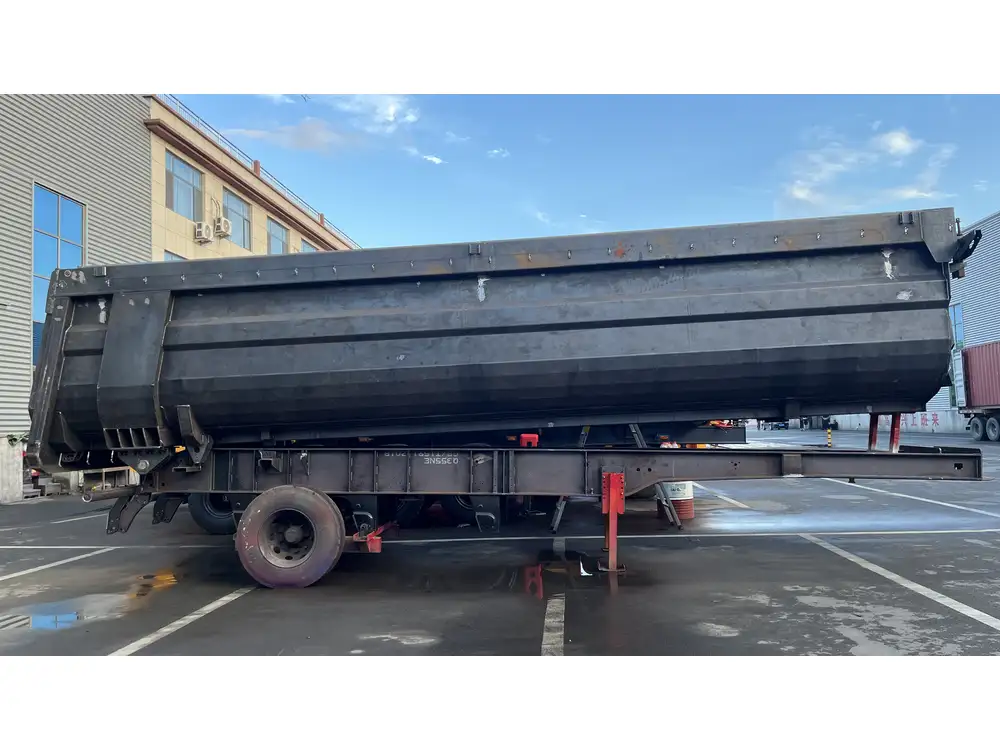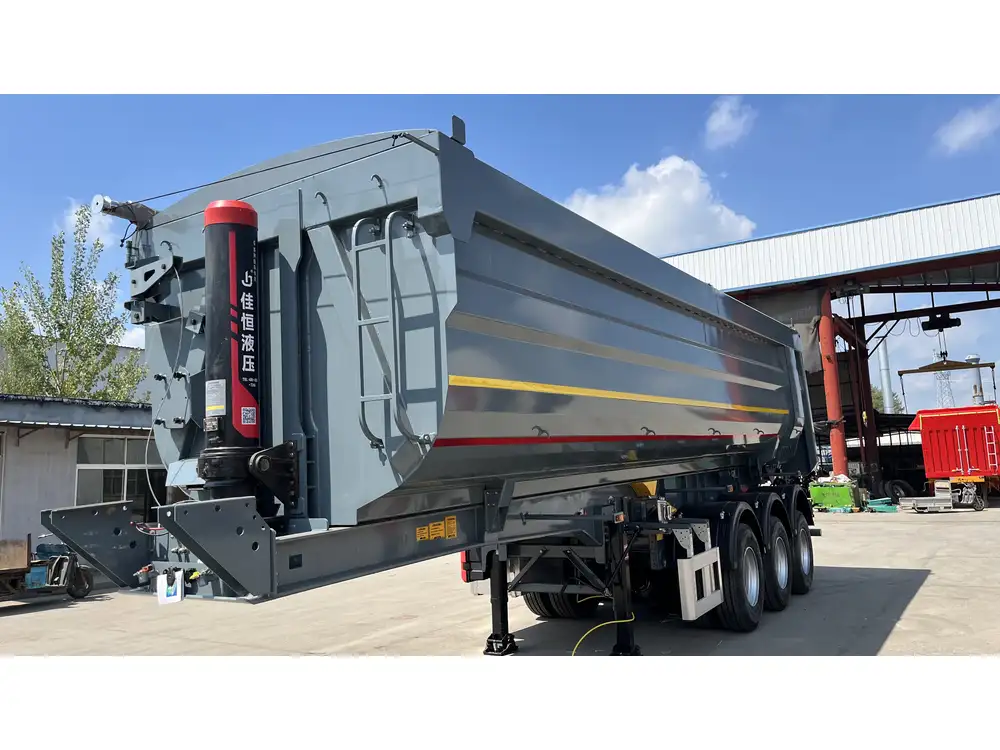Running a tackle cable correctly in a dump trailer is crucial for ensuring safety, efficiency, and longevity of your equipment. In this thorough guide, we will delve into the intricacies of tackle cable installation, covering everything from essential components to troubleshooting common issues. By following these guidelines, you’re sure to enhance the operational capabilities and safety of your dump trailer.
Table of Contents
- Introduction to Tackle Cables in Dump Trailers
- Understanding the Components of a Tackle Cable System
- Preparation Before Installation
- Step-by-Step Guide to Running Tackle Cables
- 4.1. Disconnecting the Old Cable
- 4.2. Measuring and Cutting New Cable
- 4.3. Installing the Tackle System
- Adjusting the Tension of the Cable
- Testing the Tackle System
- Maintenance Tips for Longevity
- Troubleshooting Common Problems
- Conclusion
1. Introduction to Tackle Cables in Dump Trailers
Dump trailers are invaluable for transporting materials across various industries. A properly functioning tackle cable is essential for the effective operation of the dump mechanism, which allows for controlled dumping and raising of the trailer bed. By mastering the installation and maintenance of tackle cables, users can improve operational efficiency and ensure the safety of both the operator and those working nearby.

2. Understanding the Components of a Tackle Cable System
Before undertaking the installation of a tackle cable, it is important to familiarize yourself with the main components:
| Component | Description |
|---|---|
| Cable | High-strength wire rope designed to handle heavy loads. |
| Pulley System | Guides the cable and reduces friction during operation. |
| Winch | Mechanism that controls the winding and unwinding of the cable. |
| Hardware | Includes hooks, clamps, and other fittings that secure the cable to the trailer and dump body. |
Key Considerations:
Cable Specifications: Ensure you choose a cable that matches the load capacity required for your specific dump trailer.
Material Durability: Aluminum or steel pulleys and winches should withstand outdoor conditions and heavy use.
3. Preparation Before Installation
Before beginning the installation process, you should gather all necessary tools and equipment, which may include:
- Wrenches
- Socket set
- Pliers
- Cable cutters
- Safety gloves
- Safety goggles

Safety First:
- Always wear appropriate safety gear.
- Ensure the dump trailer is on a flat, stable surface to prevent accidents.
4. Step-by-Step Guide to Running Tackle Cables
4.1. Disconnecting the Old Cable
- Begin by identifying the existing tackle cable setup.
- Make sure the trailer is unhitched and securely parked.
- Use the appropriate tools to detach any securing clamps or fittings.

4.2. Measuring and Cutting New Cable
- Measure the length needed from the winch to the pulley and down to the dump bed.
- Cut the cable, ensuring it’s slightly longer than the measured length to allow for adjustments.
Tip:
Consider adding a few extra feet for flexibility in future adjustments.
4.3. Installing the Tackle System
Attach the Cable to the Winch:
- Securely wind the cable around the winch drum. Make sure it’s tight and even.
Route the Cable Through the Pulleys:
- Carefully thread the cable through the pulley system, ensuring that it runs smoothly without obstructions.
Connect to the Dump Body:
- Secure the end of the cable to the dump bed with the appropriate hardware, ensuring a tight fit.

Illustration: Cable Routing Diagram
Winch
|
v
[Pulley]
|
v
Dump Body5. Adjusting the Tension of the Cable
Proper cable tension is critical for the effective functioning of the dump trailer. To adjust:
- Inspect the cable route to ensure there are no twists or kinks.
- Use the winch to tighten the cable until it has the right amount of resistance—neither too loose nor overly tight.
Ideal Tension Characteristics:
- Optimal Tightness: The cable should maintain form without sagging.
- Safety Factor: Ensure there’s a minimum of 30% excess strength over the expected load.

6. Testing the Tackle System
Before putting the dump trailer back into operation, it is vital to conduct a thorough system test:
- Visual Inspection: Check for any signs of wear or malfunction in the cable and its connections.
- Operational Test:
- Slowly activate the winch to raise the dump bed and verify smooth operation.
- Ensure that it descends without jerking or binding.
Checklist for Testing:
- [ ] Visual inspection completed
- [ ] Winch operation smooth?
- [ ] No unusual sounds or movements?
7. Maintenance Tips for Longevity
To prolong the life of your tackle system, regular maintenance is essential:
- Lubricate Moving Parts: Periodically apply lubricant to the pulleys and winch to minimize friction and wear.
- Regular Inspections: Conduct bi-weekly checks for signs of fraying or damage on the cable.
- Clean Components: Remove dirt and debris from all components to prevent buildup that may hinder performance.

Maintenance Schedule
| Task | Frequency |
|---|---|
| Inspect cable | Every 2 weeks |
| Lubricate pulleys | Monthly |
| Clean components | Every quarter |
8. Troubleshooting Common Problems
Despite careful installation and maintenance, users may encounter issues with tackle cables. Here we address some common problems:
Problem: Cable Snapping
- Cause: Overloading the dump trailer.
- Solution: Always respect the weight limit of the dump trailer and inspect the cable for signs of wear.

Problem: Winch Not Engaging
- Cause: Mechanical failure or power issues.
- Solution: Check the winch’s power supply and inspect for any obstructions.
Problem: Uneven Dumping
- Cause: Misaligned pulleys.
- Solution: Ensure that all pulleys are aligned correctly, and make adjustments as necessary.
Problem: Difficulty Raising Dump Bed
- Cause: Insufficient cable tension.
- Solution: Recheck and adjust the cable tension using the winch.

9. Conclusion
Running a tackle cable for a dump trailer may seem daunting, yet with the right knowledge and precautionary measures, anyone can successfully complete the installation and maintenance processes. By following this comprehensive guide, you ensure that your dump trailer operates securely and efficiently, ultimately enhancing your overall productivity and safety. With proper attention to detail, you’ll maximize the lifespan of your equipment and minimize the potential for mishaps.
Taking care of your tackle cable system is not merely an operational responsibility—it’s an investment in your equipment’s future. Whether you find yourself transporting gravel, soil, or debris, understanding how to correctly manage tackle cables will set you up for success in all your hauling endeavors.



